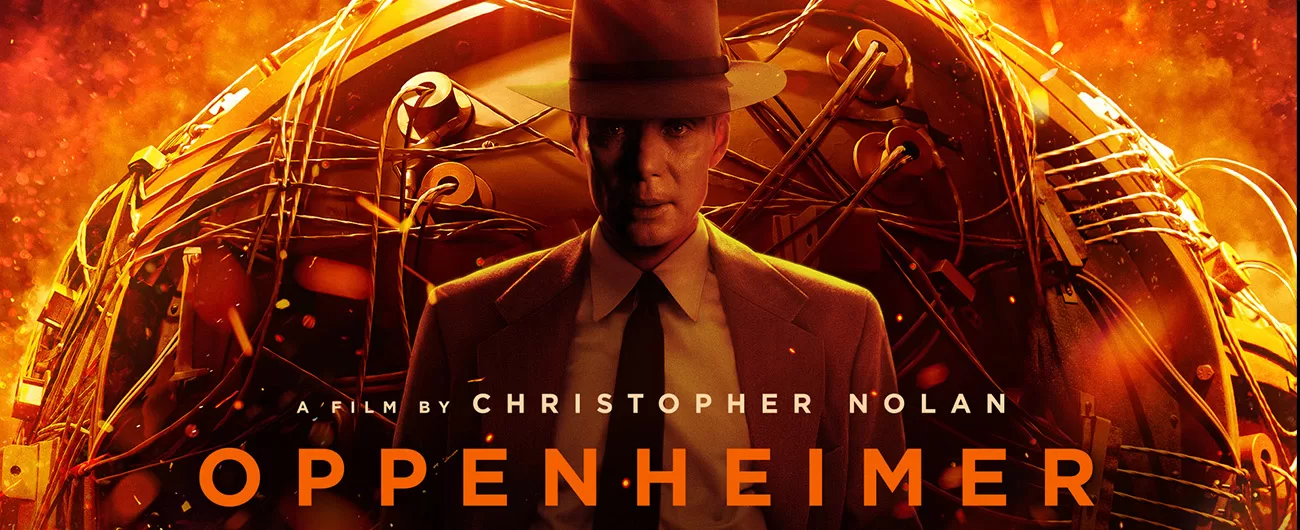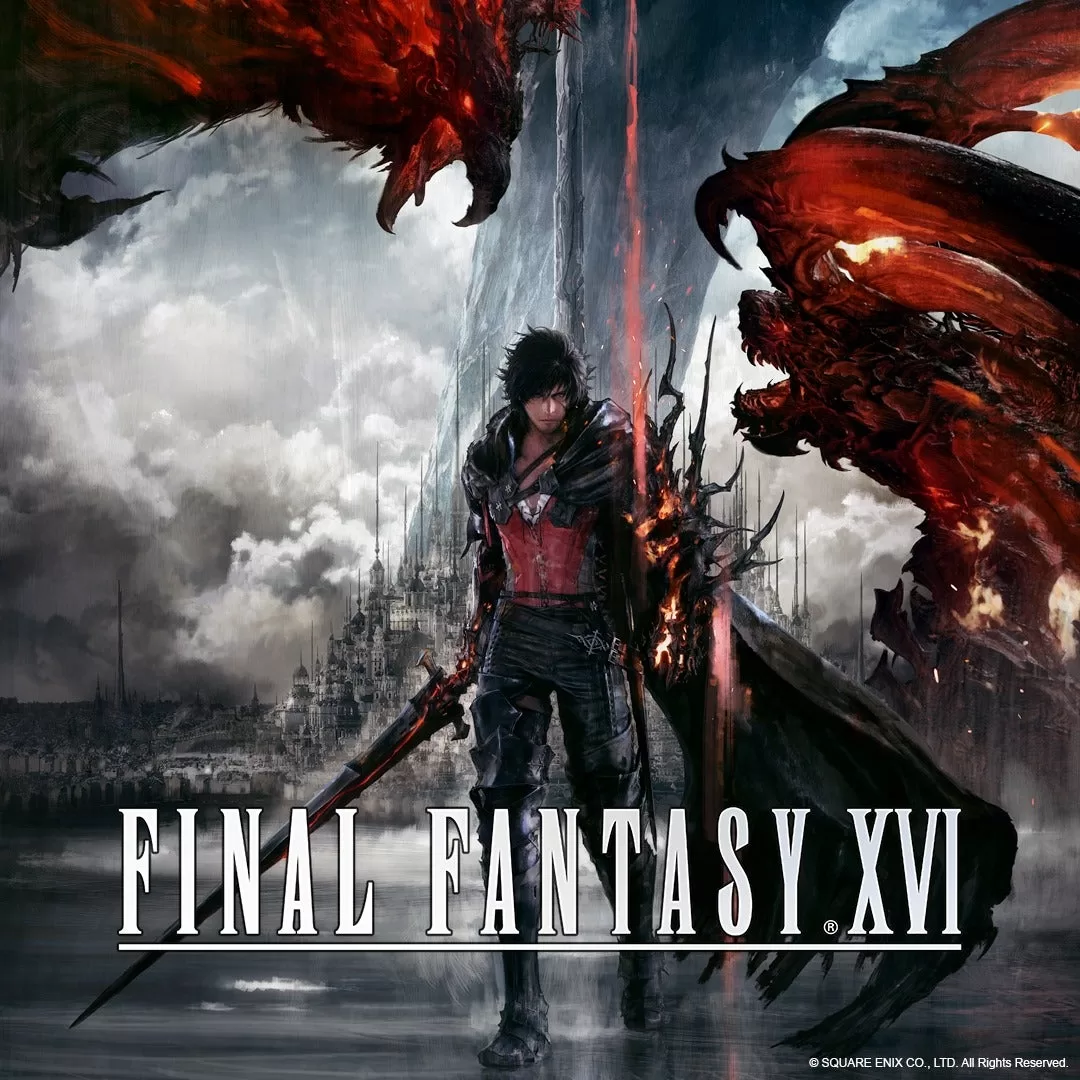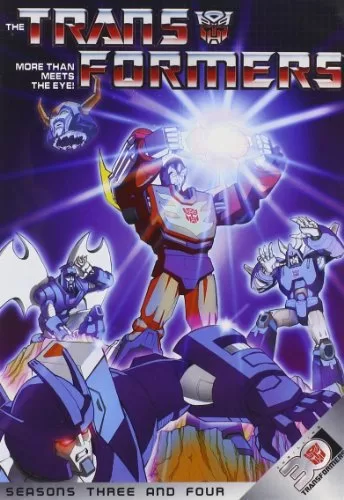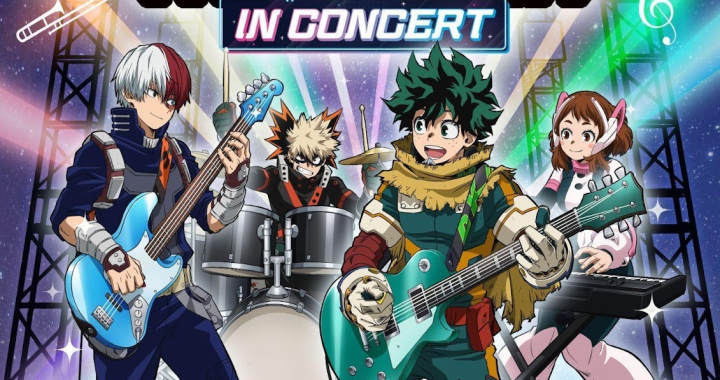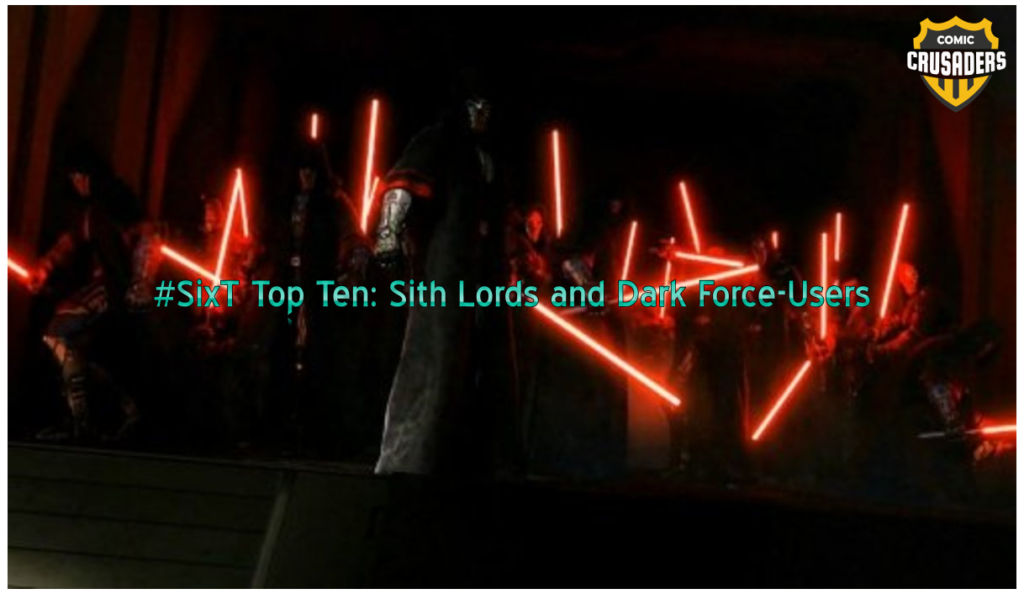
#SixT Top Ten: Sith Lords and Dark Force-Users
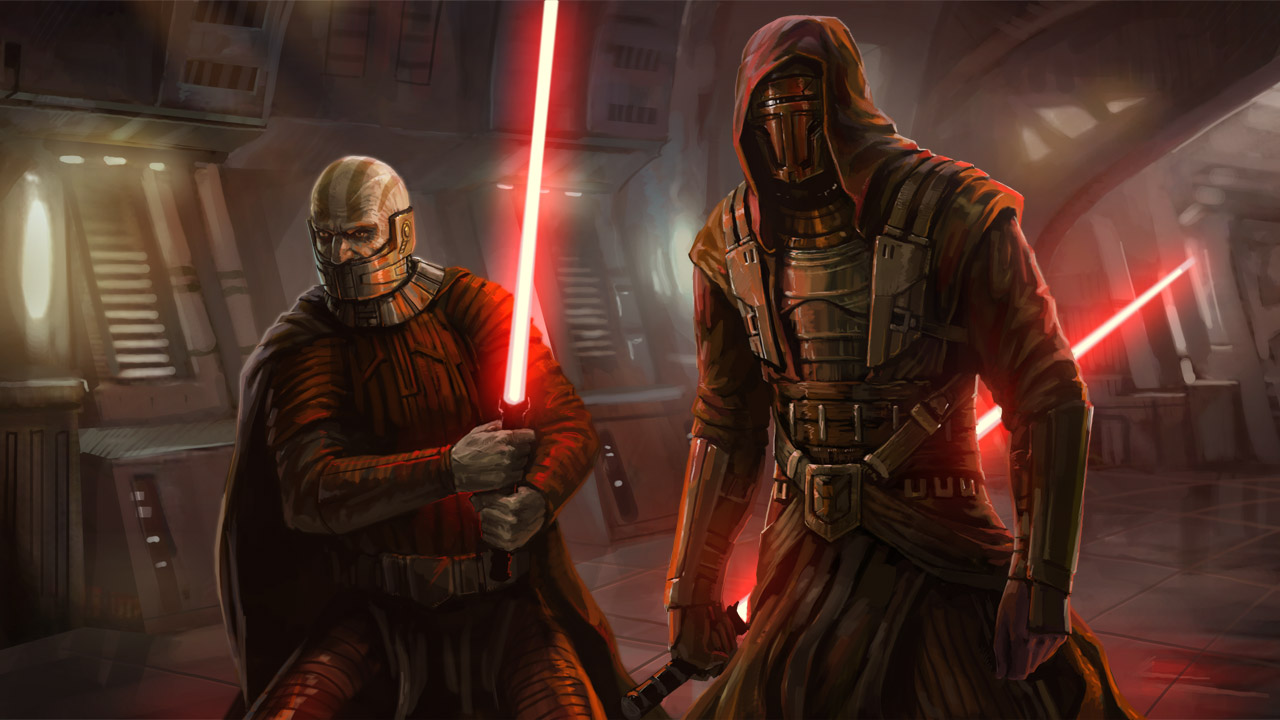
On some level, Star Wars will always be a huge part of my life. Some of my earliest memories are of seeing the original Star Wars, and the series has remained with me since then. I was a huge fan of the original Legends version of the Expanded Universe, and many of those characters remain my favorites. It’s a series that inspires me as a writer, and I’ve covered a few Star Wars series in my time with Comic Crusaders. There are very few things in pop culture that I love more than Star Wars.
However, one of the most compelling aspects of the series is its villains. I’ve always been intrigued by the ideology of the Sith Order, the main antagonists that draw on the Dark Side of the Force. Several of the series’ most iconic villains are Sith Lords and other antagonists that are Dark Force-users. Although these characters are all very different, they all live by the Sith Code:
“Peace is a lie; there is only passion.
Through passion, I gain strength.
Through strength, I gain power.
Through power, I gain victory.
Through victory, my chains are broken.
The Force shall free me.”
In this list, we’ll be exploring a number of Sith-aligned characters and Dark Side characters. There have been many such characters, both in the current Disney canon and in the Legends universe, who embody the Sith Code. The idea is not necessarily to look at the most powerful Force-users or the most evil characters, but the most interesting Dark Side characters in the Star Wars canon.
This list will be subjective, and to a large extent, this is just a listing of characters that I like most. Your list may well be different, and that’s okay. These are just the Dark Side characters in Star Wars that appeal the most to me personally. As Obi-Wan said, the truths we cling to depend on our own point of view. If your point of view is different, feel free to comment with your own picks!
This list will also contain spoilers for some of the characters featured here. While I usually try to keep major spoilers to a minimum, it’s difficult to discuss some of these characters without talking about spoiler information. This is especially true of the last few characters on the list. So if you want to experience these stories for yourself, I strongly recommend doing so before reading the list.
And now, my list of Top Ten Sith Lords and Dark Force-Users in Star Wars.
10. Asajj Ventress
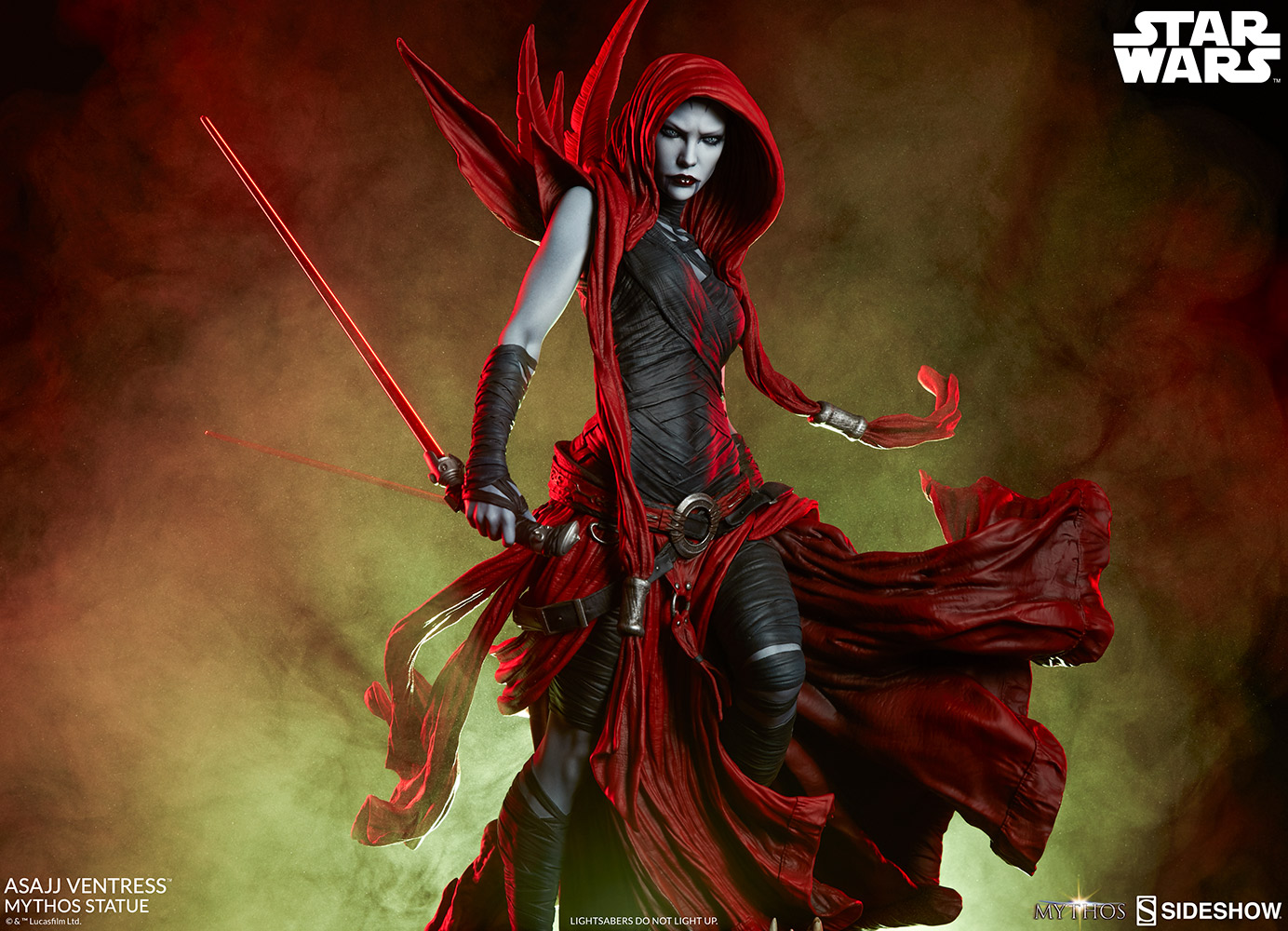
“I died a long time ago. So did everything I cared about. It’s only the likes of me, with nothing to lose, who’ll really be prepared to tear the galaxy down and start over.”
First Appearance: Clone Wars “Chapter 6” (2003)
I was not originally a fan of Asajj Ventress when she appeared in the first Clone Wars series, a show that I still to this day have yet to see. That having been said, she had a good visual design, and her basic concept is a good one. She’s more than just a Dark Jedi or an apprentice of Count Dooku. She’s also a Rattataki and a Nightsister of Dathomir, which gives her a distinctive background.
I eventually learned to appreciate the character of Asajj during the second Clone Wars series, where she was allowed to grow and develop. At first, she’s the loyal assassin of Count Dooku, who is perhaps the closest that Asajj had to a father figure. This changes when Palpatine orders Dooku to betray Asajj to her death, which he reluctantly does. This completely redefines their relationship, and Asajj has to find a new purpose after the abandonment of a man she thought of as her father.
In the end, Asajj’s journey leads her towards becoming a bounty hunter, which is an interesting choice for the character. Rather than becoming a hero or a Jedi, Asajj turns from the Sith to walk a grayer path, and that I find fascinating. In her last Clone Wars appearance, she even finds herself allied with her former enemy, Ahsoka Tano.
I hope we’ll see Asajj again, because she’s a character with definite potential. We haven’t seen the end of her story either, at least on the show. Hopefully with the many new shows and films on the plate for Lucasfilm, Asajj will make her return in one of those.
9. Count Dooku
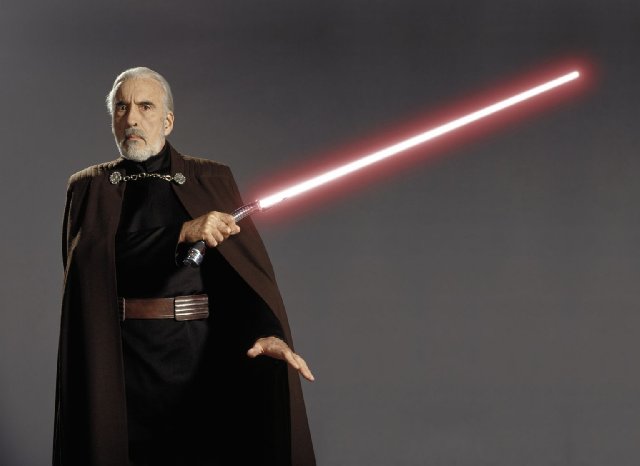
“I sense great fear in you, Skywalker. You have hate. You have anger. But you don’t use them.”
First Appearance: Attack of the Clones (2002)
I’ll be the first to admit that Count Dooku, otherwise known as Darth Tyrannus, largely makes this list because he was played by the late, great Christopher Lee. Lee was an outstanding actor, and he particularly excelled in villainous roles. He made his career on iconic villains like Dracula. Today, Christopher Lee is perhaps best known for two roles: Saruman from the Lord of the Rings trilogy… and Count Dooku.
George Lucas undoubtedly cast Lee as Dooku because he was deeply ingrained in classic film and was a fan of the Hammer horror films. (Lee’s longtime friend and Hammer co-star, Peter Cushing, played Grand Moff Tarkin in Episode IV.) This was a wise decision, because Lee gave a regal charisma to Palpatine’s second apprentice. Between Lee’s authoritative performance and his distinctive fencing-style lightsaber, Count Dooku brings a refined presence as the Clone Wars’ primary antagonist.
Still, I can’t overlook Dooku’s accomplishments as a Lord of the Sith. He was the face of the Separatists in their war against the Galactic Republic, a war engineered secretly by Palpatine. He fought capably against the most powerful members of the Jedi Order in combat, whether it was facing Anakin and Obi-Wan together, or against Yoda in single combat. Although Dooku was ultimately killed by Anakin as part of his Sith master’s plan, he was a consistent threat throughout most of the Clone Wars.
8. Ulic Qel-Droma
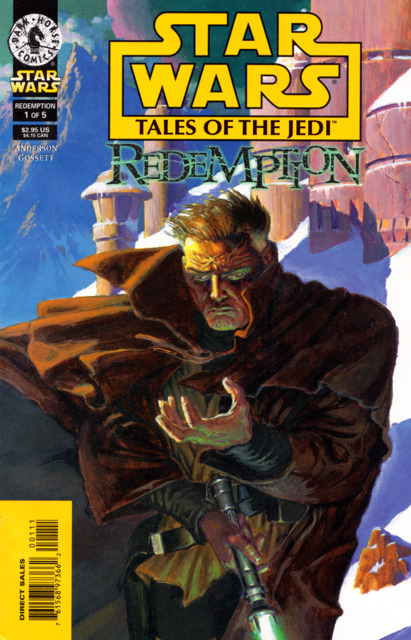
“If you expect me to repent, you’ll be sorely disappointed.”
First Appearance: Ulic Qel-Droma and the Beast Wars of Onderon (1993)
There are many fascinating Dark Lords in Legends history that nearly made this list. The one that ultimately struck me enough to mention is Ulic Qel-Droma, apprentice to Exar Kun, and the man who ignited the Great Sith War. However, Qel-Droma did not begin this way—like Anakin Skywalker, he began his career as a great Jedi Knight. Though many Jedi have fallen to the Dark Side and become the worst of the Sith Lords, Ulic Qel-Droma is among the most tragic instances of this aside from Anakin himself.
Ulic Qel-Droma is an instance of a Jedi who fell through a combination of arrogance and blindness. He attempted to infiltrate a dark cult in the Empress Teta system, and instead became corrupted by them. After being inflicted by a rage-inducing poison by Satal Keto, falling gradually to the Dark Side. After killing Keto and taking Keto’s position as warlord (along with Keto’s cousin Aleema as his lover), Ulic fell fully to the Dark Side. After being confronted by the Dark Lord Exar Kun, Qel-Droma became his apprentice and the two began a devastating conflict known as the Great Sith War.
Ulic committed many horrific acts as a Dark Lord, including a bloody assault on Coruscant. This ended with Ulic being betrayed by his lover, who he later killed for it. Qel-Droma also staged an attack on the Jedi world of Ossus, where he murdered his own brother Cay. His crimes were so great that the Jedi used a seldom-used punishment against Ulic—the Jedi severed him from the Force itself.
In the end, this led to Ulic renouncing the Sith and his master, leading to Exar Kun’s defeat on Yavin 4. As for Ulic himself, he was finally redeemed by the actions of Vima Sunrider, who Ulic trained in the ways of the Force. However, he was killed before he could fully face the final judgment of those he had wronged.
Ulic Qel-Droma is a fascinating character because his start of darkness came by circumstance rather than design. He underestimated his own weakness of character and failed to see how unsuited he was to a deep-cover mission. Because of this, Ulic became one of the worst of the Dark Lords, spreading evil across the galaxy and laying waste to countless worlds. His story is a cautionary tale in many ways and one of the more interesting legends of the Star Wars galaxy.
7. Darth Bane
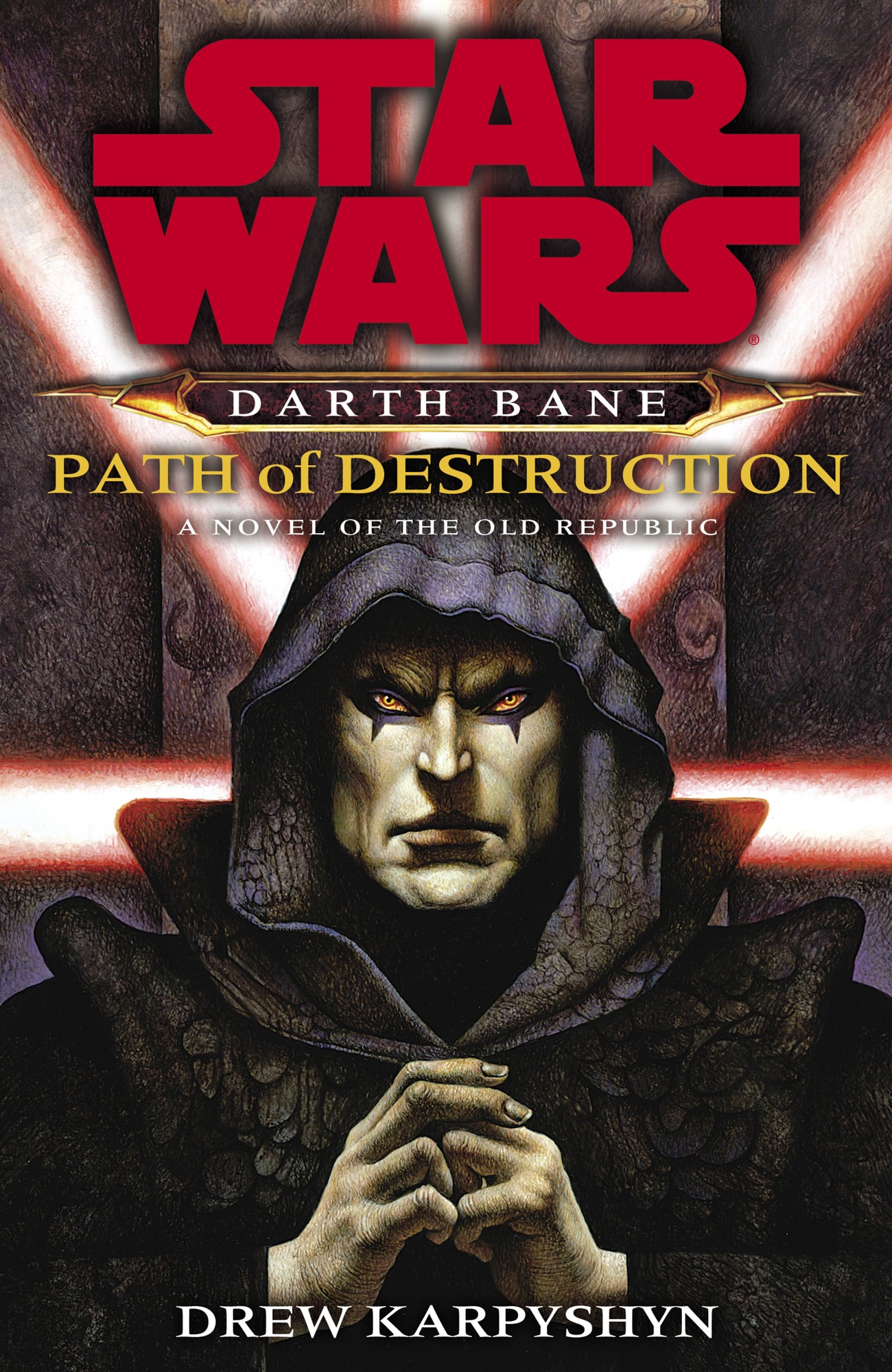
“I am not some student cowering in fear before the unimaginable power of the Dark Side. I am the Dark Lord of the Sith.”
First Appearance: Darth Bane: Path of Destruction (2006)
Darth Bane was a visionary Sith Lord who was central in the redefinition of what it meant to be Sith. It was Dessel, who later took the name of Bane, who destroyed the previous Sith Order and reduced their number of two. In the end, two Sith Lords walked away: Darth Bane and his apprentice, Darth Zannah.
Bane is credited for redefining the Sith philosophy and creating The Rule of Two. In Bane’s vision, there could only ever be two Sith Lords: a master and an apprentice. The master would embody power, while the apprentice would crave it. The idea is that the master would test their strength against each other, and in so doing, grow in strength and power. To admit more into the Sith Order would weaken the order, as it did in Bane’s time.
Darth Bane made one appearance that is considered canon today, which took place during the sixth season of Star Wars: The Clone Wars. In that story, Bane is a Force ghost who appears to Yoda on the planet of Moraband. In an interesting turn of events, Bane is played by none other than Mark Hamill, best known as Luke Skywalker.
Later Sith Lords, such as Palpatine, would honor the teachings of Darth Bane and use them in their own quest for greater power. Bane created the foundation of the Sith Order as it would exist for the following thousand years (at least in Legends continuity), and he remains among the most respected and feared of the Dark Lords.
6. Darth Maul
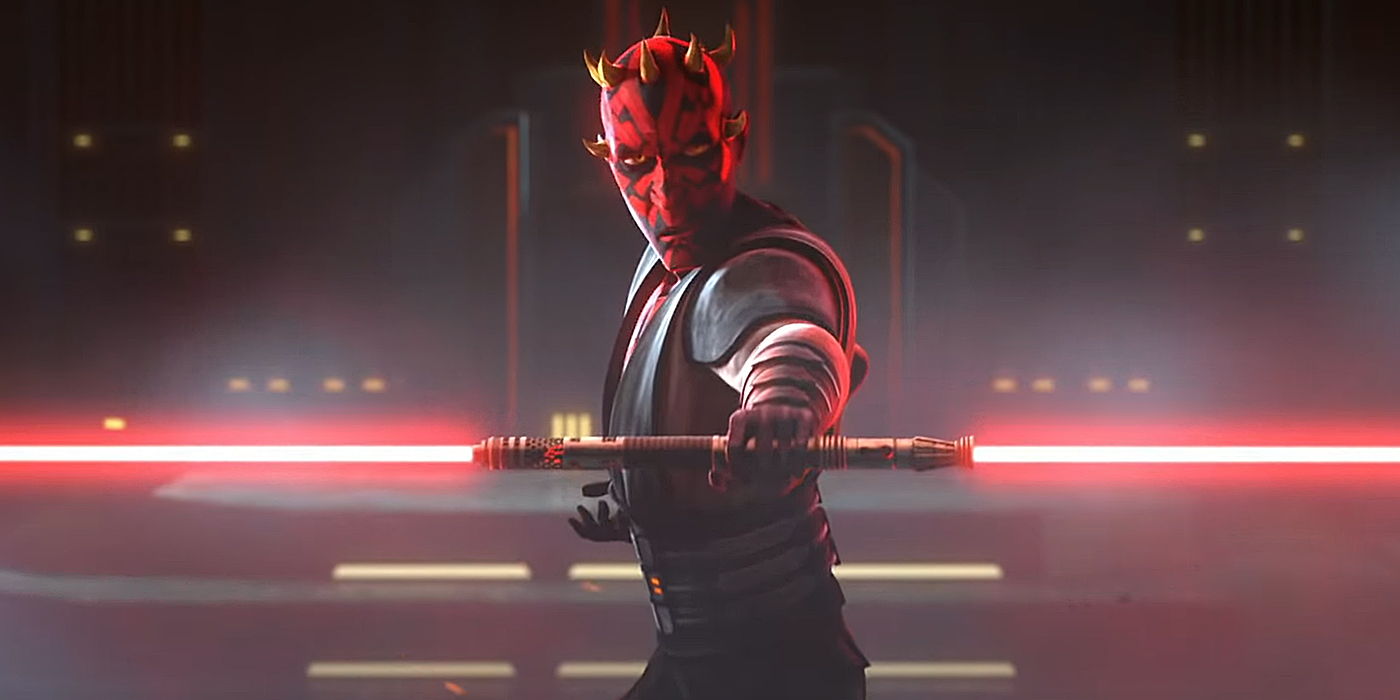
“The Sith took everything from me. Ripped me from my mother’s arms, murdered my brother, used me as a weapon, and then cast me aside. Abandoned me. Once, I had power, now I have nothing.”
First Appearance: The Phantom Menace (1999)
Darth Maul’s first appearance was not his finest moment, though he was a memorable villain in that film. He got only a few real speaking lines, and mostly he’s remembered as a great lightsaber duelist. Some Sith Lords were respected for their skill with the lightsaber, especially great masters like Tulak Hord. Maul is also well known for his use of the double-bladed lightsaber, the first character in the series to do so. However, Maul’s claim to fame was the fact that he killed Jedi Master Qui-Gon Jinn. This led to a lifelong rivalry with Jinn’s apprentice, Obi-Wan Kenobi, a feud between them that would last until the dawn of the Rebellion.
Maul survived losing the lower half of his body through hatred and sheer will, using the power of the Dark Side. He eventually acquired a cyborg body to replace his lower half, and an apprentice in the form of his brother Savage Opress. The two would eventually cause chaos throughout the galaxy, until Maul usurped the throne of Mandalore. Maul then took his own revenge upon Kenobi, murdering his beloved, the Duchess Satine of Mandalore.
After being humbled in a reunion with his master, Emperor Palpatine, Maul presided over the Siege of Mandalore at the end of the Clone Wars. He disappeared for a long time since, resurfacing on Malachor after a chance encounter with the young Jedi Ezra Bridger. After several encounters with Bridger and his Jedi master Kanan Jarrus, Maul met his end at the hands of his arch-foe, Obi-Wan Kenobi.
Darth Maul became a fascinating character, though he was not one initially. His reinvention in The Clone Wars series, however, made him one of the great Star Wars villains. Maul is driven by hatred, pain and loss. He was used and discarded by his master Palpatine, who thought little of him and only tormented him when he thought of Maul at all. He’s sympathetic in an odd way because of this, but his inability to turn away from his hatred makes him a great villain. I hope we’ll see him again in future stories, especially upcoming shows like The Bad Batch.
5. Darth Nihilus
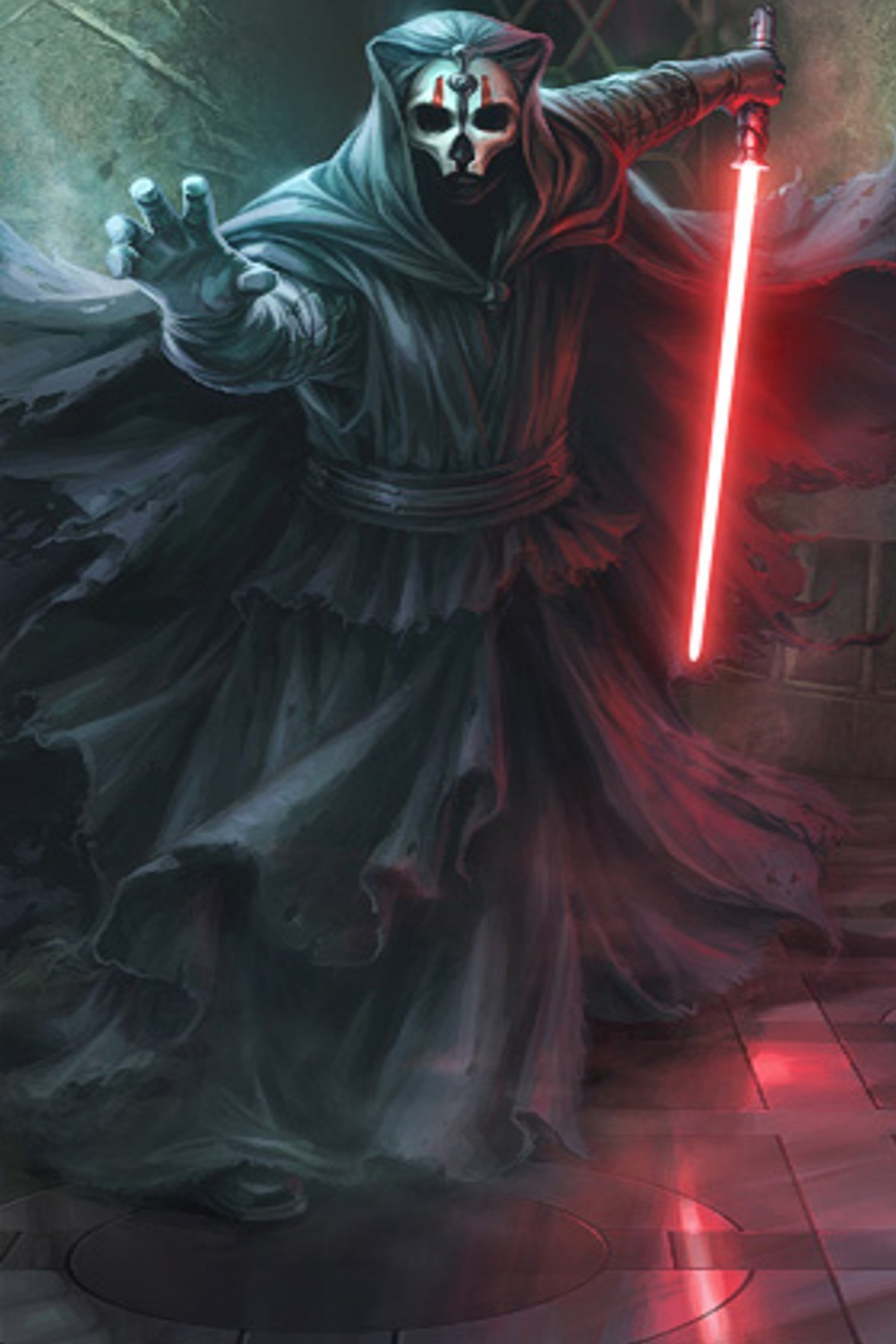
“You are the darkness in which all life dies, my lord.”
First Appearance: Knights of the Old Republic II: The Sith Lords (2004)
Anyone who knows me is probably aware of my love for Star Wars: Knights of the Old Republic II, especially the Restored Content mod for the PC version of the game. While the original KotoR tends to be more highly praised, KotoR II took the storytelling to the next level. The characters and villains were more compelling, the philosophical ideas were deeper and more fascinating, and some of the gameplay elements were more refined. Unfortunately, KotoR II was rushed to release before it could be properly finished, and we never got to see Chris Avellone’s true vision for the game until the release of the Restored Content mod on PC.
One of the best villains in a game full of amazing villains was Darth Nihilus, one of the most powerful Sith Lords in the franchise. Darth Nihilus is the Lord of Hunger, a Sith Lord that feeds on the Force itself to fuel his own power. He is a living wound in the Force. His hunger is so endless, in fact, that Nihilus has destroyed entire worlds by feeding on the Force itself. One such planet was the world of the Miraluka, who had the ability to sense the patterns in the Force. Nihilus destroyed the planet and spared only one person… the blind Miraluka Visas Marr, who he took as his apprentice.
In many ways, Nihilus is a force of nature that is akin to Marvel’s Galactus, someone who feeds on worlds to sustain himself. Although I won’t reveal any deep spoilers for those who might want to play KotoR II, Nihilus also is a dark mirror to the Jedi Exile, Meetra Surik. Both bear the scars of the Battle of Malachor V, although in different ways. In the end, Darth Nihilus is a being of endless death and destruction, existing aboard a broken derelict ship sustained only by his own power. He exists and sustains himself on the life force of others, but he is dead inside.
Darth Nihilus is a fascinating villain, although we don’t truly know him. He’s a character who is shrouded in mystery, and he speaks in a language that we don’t understand. The final confrontation with Nihilus is also a bit underwhelming, which is one of the reasons he’s only in the middle of this list. However, he has a memorable character design, he mirrors the hero he’s designed for perfectly, and his threat level is off the charts. He’s easily one of the best Sith Lords not designed for the films.
4. Darth Vader
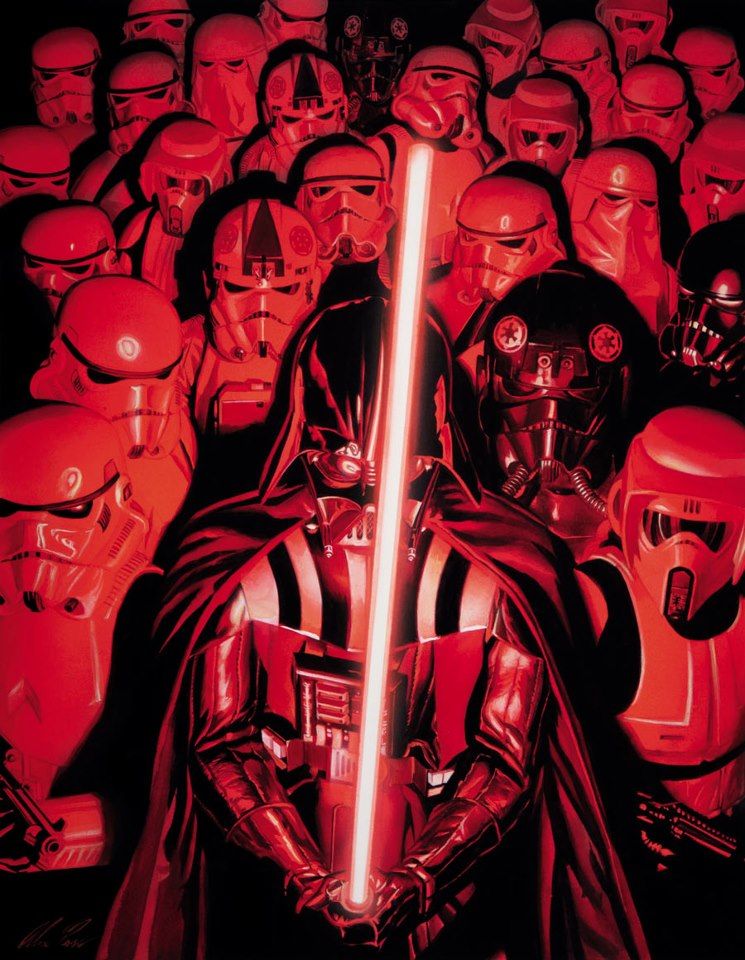
“With our combined strength, we can end this destructive conflict and bring order to the galaxy.”
First Appearance: Star Wars (1977)
Some people will probably think that Darth Vader should be placed higher on this list, and I can sympathize with that view. There’s no question that Vader is one of the most iconic villains of all time. His costume design is iconic, the raspy breathing is a memorable character quirk, he’s brilliantly voiced by the great James Earl Jones, and he’s driven by a great motivation. Anakin Skywalker is also a sympathetic and even tragic villain, having fallen after being one of the greatest Jedi Knights of the Old Republic. At the same time, the other Sith Lords on this list speak more to me as characters, much as I love Anakin and his character arc.
Although Vader is introduced as a cold, ruthless, and brutal enforcer of Imperial law, we eventually discover the cracks beneath the space-black armor. He is driven by anger and pain after having lost everything that ever mattered to him. All he has by the time of A New Hope is his position of power within the Empire and the Dark Side that sustains him. However, we learn in the prequel trilogy how much that cost him—the love of his wife, the loss of his children, the respect and regard of his best friend. Anakin Skywalker was once the greatest of the Jedi, and in the end he is reduced to the pawn of his Sith master, Emperor Palpatine.
Vader also has one nagging flaw that keeps him from being truly Sith, and that is Anakin’s love for his son. Although he is fallen into darkness, he always tries to protect Luke from the Emperor. It is Vader, for instance, who suggests turning Luke to the Dark Side over killing him. One could liken Vader to a father who wants to recruit his reluctant son into the family business, his insistence that he knows what is best for Luke as a father. In the end, Luke recognizes the conflict within Vader, sees the spark of Anakin Skywalker beneath the helmet of Darth Vader. Luke learns and understands his father’s lessons, using them to give Anakin one last chance at redemption before he meets his end. It’s a lovely conclusion to the character, and his sacrifice is an important part of his character arc.
Regardless of later films, Anakin Skywalker was always intended to be The Chosen One of prophecy. It is Anakin who destroys the Sith by killing the Emperor at the cost of his own life, thus bringing balance to the Force. George Lucas was always clear about his intentions with the prophecy; it very much echoes Greek tragedy, where the prophecy leads Anakin to his own doom. It is Anakin’s status as the hero of prophecy that brings about his end and the rise of Darth Vader, but it also leads to his redemption and heroic sacrifice.
Although Vader is a fascinating villain, I regard him more in the role of protagonist, especially since the prequels and The Clone Wars. His arrogance, impulsiveness, and self-righteousness get the better of him, as we see him gradually fall into darkness. Anakin is ultimately one of the great tragic heroes who becomes a tragic villain, with a complete story arc over the course of the six films and the Clone Wars series. Anakin remains one of the most beloved characters in the franchise and for good reason.
3. Darth Traya
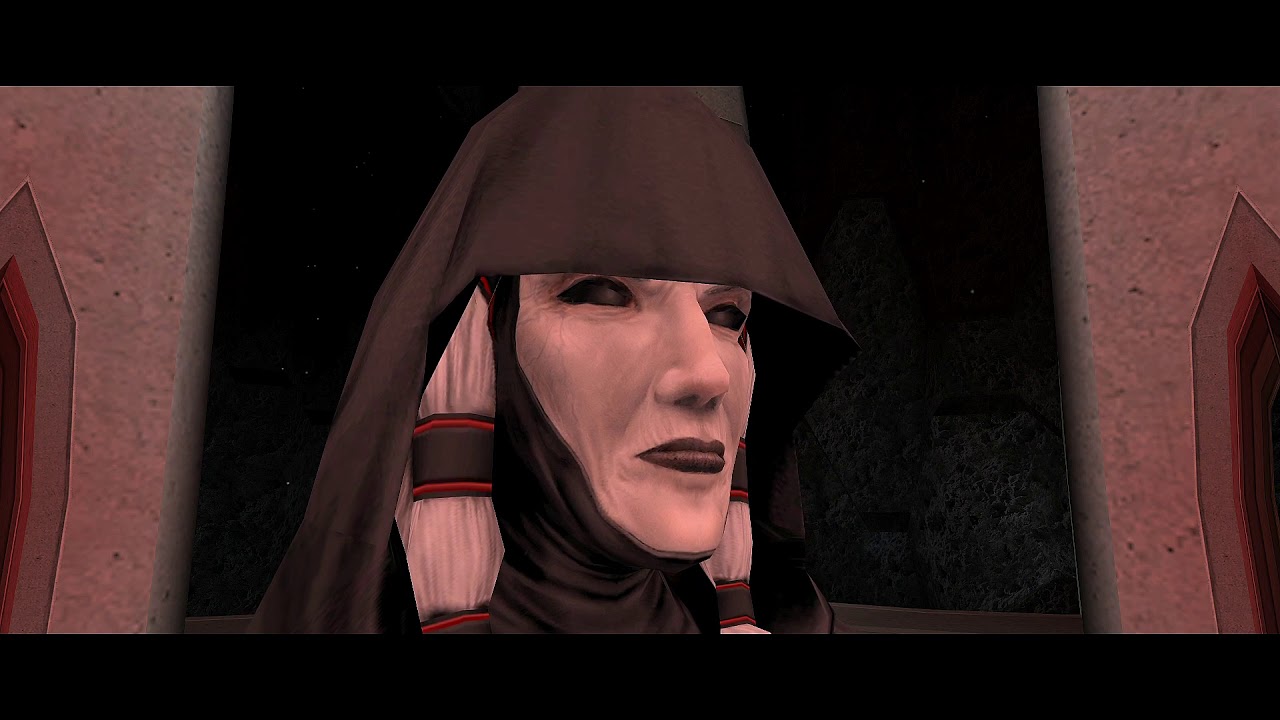
“What do you wish to hear? That I once believed in the code of the Jedi? That I felt the call of the Sith, that perhaps, once, I held the galaxy by its throat? That for every good deed I did, I brought equal harm upon the galaxy? That perhaps what the greatest of the Sith Lords knew of evil, they learned from me?”
First Appearance: Knights of the Old Republic II: The Sith Lords (2004)
Darth Traya is easily one of the greatest villainesses of the entire Star Wars saga. She is certainly one of the most manipulative villains in the series, and she is only rivaled in this respect by the next character on this list. Even the name indicates this, as Darth Traya is the Lady of Betrayal.
When we first meet her in Knights of the Old Republic II, she introduces herself as an old woman named Kreia. She attempts to befriend the Jedi Exile, the protagonist of the game, and over time she becomes the mentor of Meetra Surik. Through Kreia, we learn much about the state of the galaxy in the five years following the Jedi Civil War, about the nature of the Sith threat that hunts the Exile. Kreia becomes a member of your party throughout most of the game, fighting alongside you while offering you the benefit of her wisdom and experience.
And all of it is a lie.
The entire time that Kreia is with you, she is enacting her own schemes for her own advantage. She turns Atton Rand, the Exile’s most loyal companion, into a slave through blackmail and coercion. Kreia leads the Exile where she wants her to go, showing the Exile what she wants her to see. She manipulates the Exile and tries to turn her against the Jedi Masters that exiled her, feeding the Exile false information to suit her own narrative. She makes the Exile more and more powerful, but only so that Kreia can enact her own larger agenda. She manages to enslave a psychotic Wookiee named Hanharr through a life debt, turning him into little more than a pawn and a servant to her cause. She pushes a Jedi Master named Atris down the road to the Dark Side, and turns three others into mindless vegetables. She is as terrible as she is wise, as manipulative as she is helpful.
Her true agenda is terrible on a cosmic scale. Kreia, the mentor who has been with you the entire game, is revealed as Darth Traya, the last of the Sith triumvirate that lurks in the shadows. Kreia wants to kill the Force itself. She despises the Force, seeing it as a manipulative entity that controls all those who use it for its own cosmic purposes. She sees the Force as a being that uses both sides to further conflict between the Jedi and the Sith. Her philosophy is as fascinating as it is horrifying, and yet there is a strange logic behind it. Kreia cares about the Exile because the Exile was the one person who was able to turn away from war, turn away from the Force, and she respects that. The final battle of Knights of the Old Republic II is satisfying, pitting teacher against student, master against apprentice, for the fate of the universe. In the end, Kreia gives her former student one last gift before death, a taste of the future that the Exile has created for the galaxy and her companions.
Kreia also has a deeply compelling backstory as a character. She was a Jedi Master once, and she was the Jedi Historian during her time with the Order. She was one of the Masters who had trained Revan, a pivotal figure in the KotoR series. She trained the other members of the Sith triumvirate in KotoR 2, including Darth Nihilus and Darth Sion (another compelling villain who didn’t quite make this list).
And although this was never confirmed officially, I’ve always liked the idea that Kreia was once a Jedi named Arren Kae. Arren Kae is the mother of the Echani Handmaiden named Brianna, another member of your party in KotoR 2. Kreia even looks quite a bit like the Handmaiden, who claims that she resembled her mother. Kreia also has an unexplained antagonism towards Brianna, and we never find out why, but it’s made much more understandable if she is Brianna’s mother. It is possible that Chris Avellone, the writer and lead designer of KotoR 2, never intended this, but it’s a detail that dovetails nicely and adds depth to both characters.
Kreia, the woman who became Darth Traya, is easily one of the most fascinating villains in the entire Star Wars saga. I find her more interesting than the vast majority of villains who have appeared on screen, despite a single appearance in one video game. Of course, there is one very notable exception to that rule…
2. Emperor Palpatine/Darth Sidious
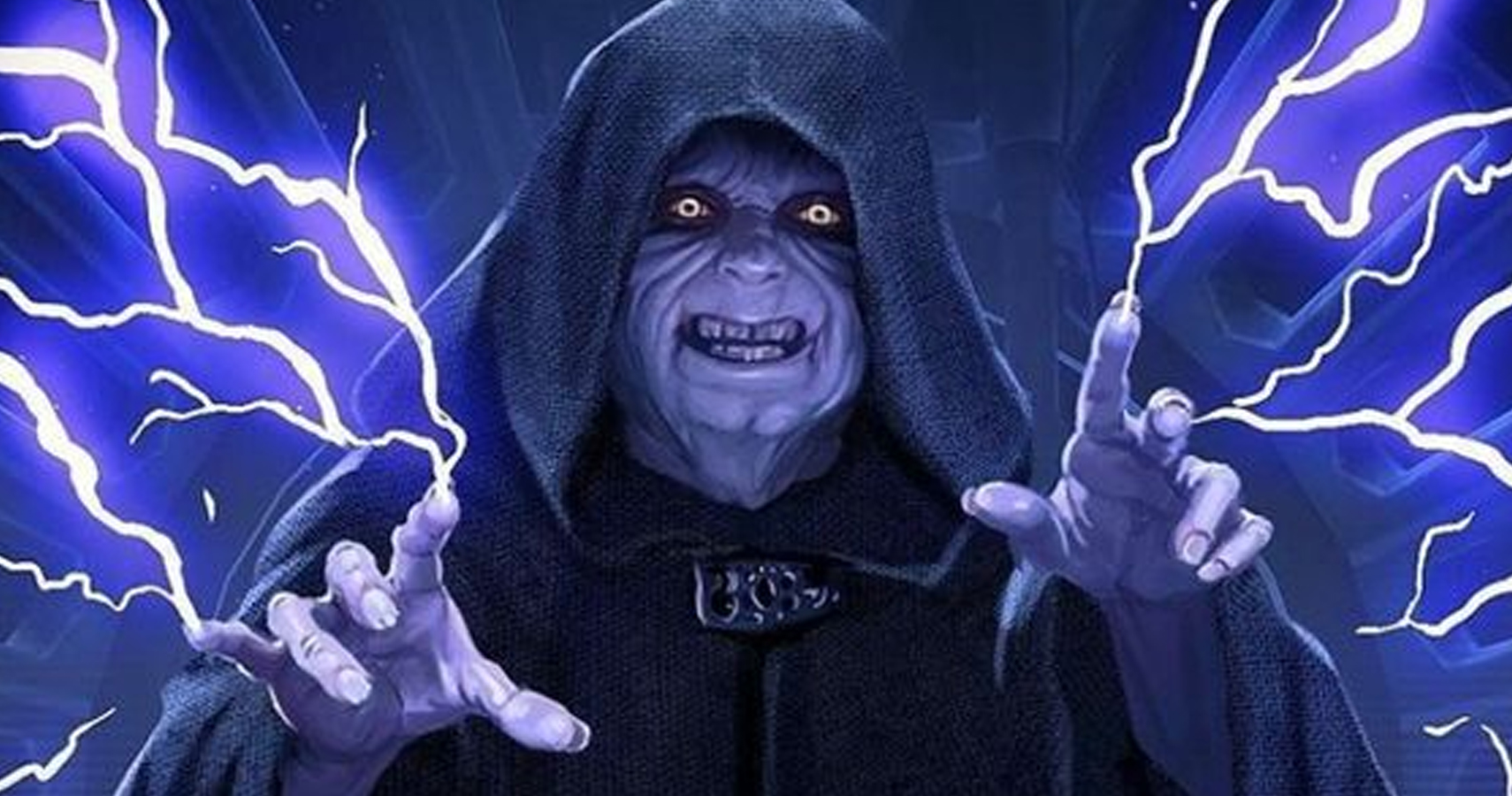
“Once more, the Sith will rule the galaxy… and we shall have peace.”
First Appearance: The Empire Strikes Back (1980)
As much as the story of Darth Vader dominates the Star Wars saga, Vader is not the ultimate villain of the saga. That honor belongs to one man: Darth Sidious, the man who would become known across the galaxy as Emperor Palpatine. Palpatine is the true Dark Lord of the Sith, the evil master to whom even Vader bows and dreads.
We don’t know much about Palpatine’s background before he became the Senator from Naboo, and eventually the Supreme Chancellor of the Old Republic. However, what little we do know indicates that he was always ruthless and ambitious. The “old Sith legend” that Palpatine relays to Anakin in the opera scene implies that he was the apprentice of Darth Plagueis, and that Palpatine killed his master in his sleep. His expression indicates that Palpatine takes pride and even pleasure in that act of murder, the moment when he took his place as Dark Lord of the Sith.
We also know that Palpatine is a true believer in the Rule of Two, established previously by Darth Bane. He makes this abundantly clear in The Clone Wars when he confronts Darth Maul after discovering that his dead apprentice had survived. “Always there must be two,” Palpatine says, perhaps to explain why he murders Maul’s apprentice and brother, Savage Opress. Still, we know that the lives of his apprentices mean nothing to him; Palpatine is more than happy to sacrifice one if he thinks that he can get a better one. He orders Anakin to kill Count Dooku, pushing Anakin down the path to the Dark Side. The way of the Dark Side, to Palpatine, is about the strongest and the most ruthless surviving and dominating over all others.
More than this, Palpatine is the nefarious master manipulator who orchestrated the downfall of the Old Republic and establishing the evil Galactic Empire. Palpatine schemes his way into the office of Supreme Chancellor, using the Trade Federation and an idealistic young Queen of Naboo to amass political power. He furthers the conflict by engineering the conflict with the Separatists using his apprentice, Count Dooku, as the figurehead of the Separatist cause. Palpatine even arranged the creation of the clone army, manipulating the Jedi and the Senate into using them to fight in the Clone Wars. This proves to be a poisoned chalice, since it’s the clone army that leads to the end of the Jedi Order, as Palpatine uses them to wipe out the Jedi. He also engages in a campaign of corruption that brings Anakin Skywalker to his fall, turning him into Darth Vader.
Even Luke Skywalker, the hope of the Rebellion, proves unable to defeat Palpatine on his own. Only two points give Luke the advantage against Palpatine during their final encounter—his recognition of Palpatine’s overconfidence as his weakness, and Luke’s faith in his father’s redemption. It is not Luke who defeats the Dark Lord, but Anakin Skywalker, brought back to the Light by his love for his son. It is Luke’s insight that allows the prophecy to be fulfilled and the Chosen One to complete his destiny.
Despite all this, Emperor Palpatine is the greatest villain in the Star Wars saga, and even a bad appearance in The Rise of Skywalker doesn’t undermine his accomplishments. Darth Sidious ignited the Clone Wars, created the Galactic Empire, and he represents everything the Rebel Alliance and the Republic stands against. Beyond that, he’s simply an entertaining character to watch, even in the prequels, especially as played by Ian McDiarmid. Emperor Palpatine, more than most characters, embodies what it means to be a true Dark Lord of the Sith.
1. Darth Revan
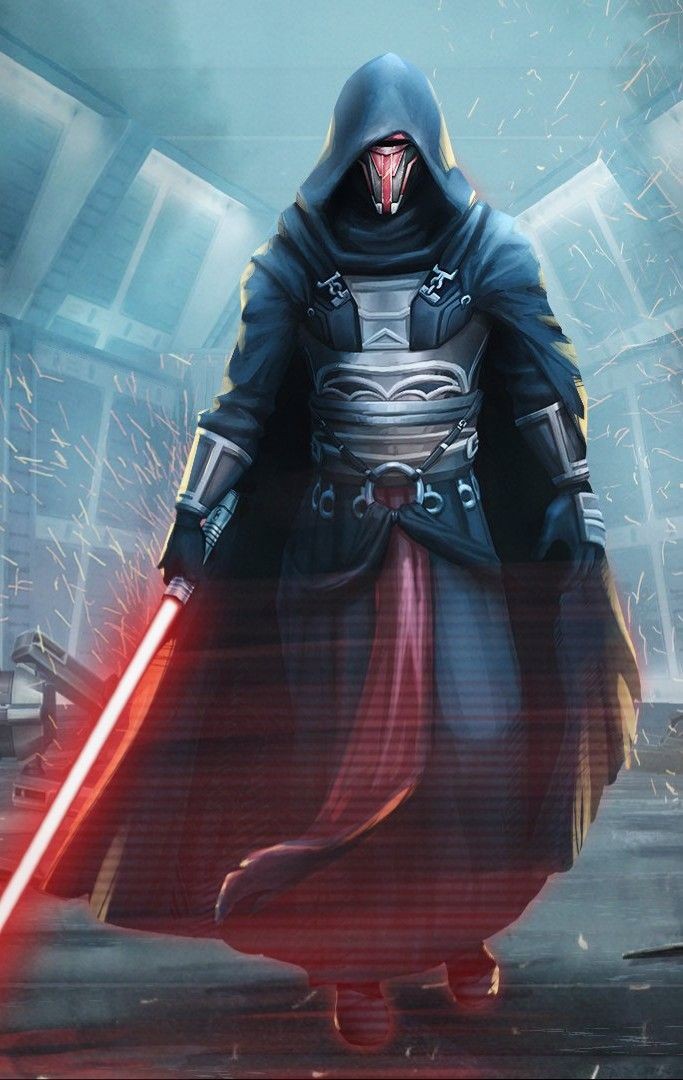
“…Perhaps Revan never fell. The difference between a fall and a sacrifice is sometimes difficult, but I feel that Revan understood that difference, more than anyone knew. The galaxy would have fallen had Revan not gone to war. Perhaps he became the Dark Lord out of necessity, to prevent a greater evil.”
First Appearance: Knights of the Old Republic (2003)
My favorite Star Wars character of all time is Darth Revan. He is not simply my favorite Sith Lord, but my favorite character in the entire franchise. Revan is simply one of those unique characters that is so compelling that he manages to captivate even without fully knowing him as a character.
The story of Revan is central to the entire Knights of the Old Republic series, and he casts a shadow even over The Old Republic MMO game. When the Mandalorians began a crusade against the Old Republic, the Jedi were deeply divided about how best to respond. The Jedi Council counseled patience and waiting to observe the threat, while other Jedi wanted to join the battle against the Mandalorians. It was Revan who rose to the occasion, taking leadership of the Jedi who chose to stand against the Mandalorian threat and fighting back against them. The Mandalorian Wars burned across the galaxy, with the Republic at a heavy disadvantage until Revan joined the war.
Revan was a pragmatist and a tactical genius, and it was only due to his battle plans and his ability to make calculated sacrifices that the Republic prevailed. As the Mandalorian warrior Canderous Ordo would later say, “Revan’s strategies and tactics defeated the best of us. Even Mandalore himself was taken aback by the ferocity of his attacks, the tenacity of his defenses, and the subtlety of his plans. Revan fought us to a standstill and then began pushing back. We didn’t really stand a chance.” However, Revan was also a ruthless battle commander, willing to make tactical sacrifices to achieve victory. Canderous would also note that “Revan abandoned worlds of their defenders so that others would be too fortified to strike, and was willing to make sacrifices in order to advance goals.” As a military commander, Revan is considered among the greatest in Star Wars canon, second possibly only to Grand Admiral Thrawn.
A pivotal point in the war was the final battle between Revan and Mandalore the Ultimate on the planet of Malachor V. Although Revan’s side prevailed and Mandalore the Ultimate was slain, it came at a tremendous cost, as the battle ravaged the entire planet. The war was also costly and destructive to his own side, eliminating those that Revan considered a threat to his future plans. It also pushed many of his Jedi followers to the Dark Side, with the only one known exception—Meetra Surik, the Jedi Exile. It later turned out that Revan had engineered this outcome from the start, all with the goal of preparing for a greater war against the true Sith Empire.
The seeds of the Mandalorian Wars sprouted bitter fruit, leading to Revan creating his own Sith Empire with the intent of conquering the known galaxy. He declared himself Darth Revan, Dark Lord of the Sith, while his apprentice became Darth Malak. In addition to his own followers, who all became Sith, Revan found another weapon as well—the Star Forge, a weapon of the ancient Rakatan Empire that could create an endless amount of war machines and material for his conquest of the Republic. He also employed other tactics and weapons—assassin droids to eliminate his enemies, torturers to capture Jedi and turn them to the Dark Side. But Revan’s true weapon was also his tactical mind, and his ability to make any necessary sacrifice for the good of his cause. Revan then began what became the Jedi Civil War, the battle between Jedi loyal to the Republic and those who were loyal to Revan and the Sith.
The course of the war changed when the Jedi sent a boarding party to Revan’s ship to capture Revan. Between a protracted battle with the Jedi and the betrayal of Darth Malak, Revan fell into the hands of the Republic. The Jedi then expunged Revan’s memory of who he was, including his very identity. They eventually retrained Revan in the ways of the Force, in the hope that Revan would lead the Jedi to the secret of the Star Forge. In the end, this version of Revan redeemed himself, defeating Malak and destroying the Star Forge, becoming once more the savior of the Republic.
Revan was explored further in Knights of the Old Republic 2, where Revan has a strong background presence. After the events of the first game, Revan disappeared, and through bits and pieces, we learn his larger goal. Revan eventually left for the Unknown Regions, realizing the threat of the true Sith Empire to the known galaxy and the Republic. However, many of the party members in the game shed light on Revan’s actions and motivations. These people (and droids) and their relationships with Revan deepen him and give a deeper insight into Revan and his actions in the two games.
Although designed to be a character that anyone could play in different ways, the consistent things about Revan make him a compelling character. Although it is often a truism that a Jedi’s life is sacrifice, Revan took it farther than any other Jedi ever did. To protect the galaxy, Revan sacrificed himself and his own principles as a Jedi, becoming a conqueror as much as a savior. Revan is a visionary, a tactician, and a pragmatist, always willing to make the necessary sacrifices to achieve his objectives, whether as a hero or as a Sith Lord. He also showed a willingness to sacrifice his own happiness for the good of others, even if it meant leaving behind his wife and his friends and facing a dangerous threat alone. He was capable of great evil as much he was capable of great good, often for the same reasons, and that makes him a fascinating and complex figure. The mystery of Revan adds much to his character as well, allowing a player to interpret him in different ways but also making the player wanting to learn more. He also has an iconic design, one that had a strong influence on the look of Kylo Ren in the sequel trilogy.
Honorable Mentions
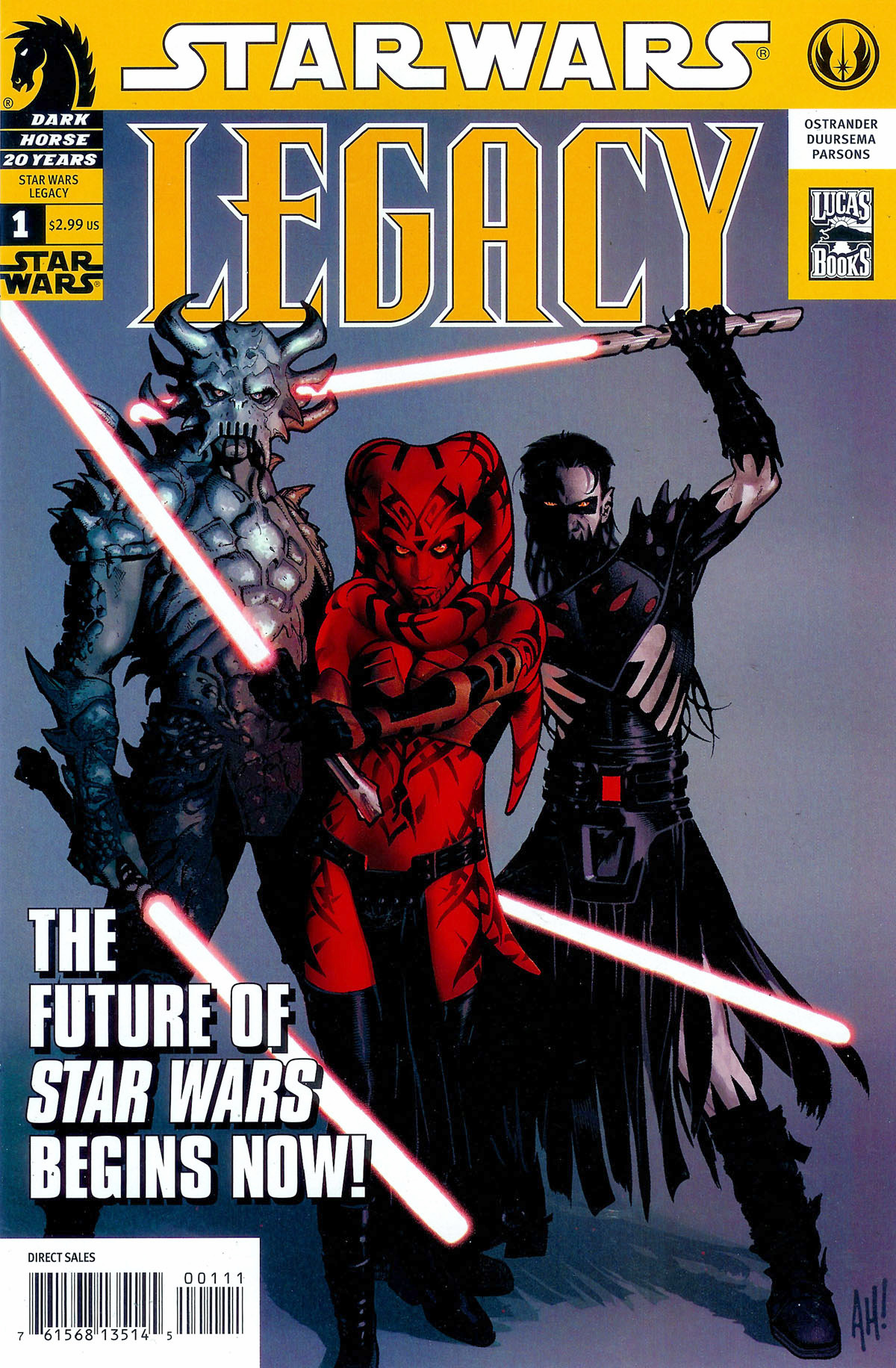
Mara Jade: Mara Jade is one of my top five favorite Star Wars characters, but I didn’t think it made sense to include her. While Mara was trained by Palpatine, she’s not technically a Sith, and she usually occupies a gray area among Force-users. She’s worth mentioning, but I don’t feel like she technically counts as a dark Force-user.
Galen Marek/Starkiller: I imagine that quite a few fans of The Force Unleashed would put Galen Marek high on their lists. I can understand why. From what I’ve seen, he’s a great character, and I love the idea of Vader having a secret apprentice. Unfortunately, I haven’t played enough of those games, so I don’t know him well enough to include him on the full list. I did consider him, though, and I like what I’ve seen of Starkiller, so I’m listing him here.
Darth Talon: The Star Wars: Legacy comic by John Ostrander and Jan Duursema was, in many ways, the future of the Star Wars galaxy that the sequel trilogy should have been. It built on the lore of the Expanded Universe to give us one last great story about the Skywalker family. Perhaps the most memorable character from Legacy is the Twi’lek Sith assassin, Darth Talon. Talon’s primary weapon is her seductiveness, which she uses to her advantage as a Sith assassin. In fact, she uses this against Cade as part of her plan to corrupt him to the Dark Side, though she ultimately fails. However, she probably is most notable for her visual design, which is popular among cosplayers even today. Talon is quite probably the most memorable villain from Legacy aside from Krayt himself, which is impressive for a character whose best moments are in the first year of the title. Talon very narrowly missed being on the list, as it was quite close between her and Asajj.
Darth Sion: There is not a single bad villain in Knights of the Old Republic 2, so I couldn’t overlook Darth Sion. Sion works well especially against a female Exile (the canonical version, Meetra Surik), where he’s torn apart inside by a love-hate relationship with her. Sion is immortal and cannot die, and he’s keeping himself alive through hatred and the power of the Dark Side. In many ways, he’s the Star Wars version of the Nameless One from Planescape: Torment (another great Chris Avellone creation). His voice actor is also impressive as well, making Sion sound menacing and powerful. Absolutely love this character, but this list was already dominated with KotoR characters as it is.
Darth Krayt: Another character who is trying to hold on to eternal life and destined to fail. Darth Krayt is the Sith name of A’Sharad Hett, a Tusken Raider who became a Jedi during the Clone Wars. Due to a combination of Yuuzhan Vong technology and the Dark Side, Krayt managed to hold onto life for far longer than his allotted time. He also created the One Sith philosophy that attempted to move away from the Rule of Two. Krayt managed to conquer a large part of the galaxy and built a new Sith Empire, if not as effectively as Palpatine did. He was a solid arch-villain in Star Wars: Legacy, but I felt like Talon was more memorable.
Visas Marr: A Miraluka Sith who has the power to “see” through the Force. Visas was a party member in Knights of the Old Republic 2, and she was essentially the Silver Surfer to Darth Nihilus’s Galactus. I liked her quite a bit, and I did use her frequently in the game. Unfortunately, she was yet another character from KotoR 2 that I had to pass up in favor of better ones.
*
There are many, many other great Sith Lords, Dark Jedi, and other dark-aligned Force-users in the Star Wars universe that I couldn’t list here. If there are some that you’d like to mention, please comment and talk about them.
For now, it’s time to pass the baton to a new Crusader. For our next Top Ten, I nominate @warehouse9ltd to choose a Top Ten topic and run with it. I’ll also add the following new Top Ten topic to the mill: Top Ten Comic Book Anti-Heroines and Villainesses. Until next time, may the Force be with you!
Author Profile
- Steve Sellers had been a fan of superheroes ever since Superman: The Movie. But it took the JSA, the Legion of Super-Heroes, Dragonlance, Lord of the Rings, Twilight Zone, and Chris Claremont's legendary run on the X-Men to make him a writer and a longtime fan of comics, fantasy, and science fiction. Steve is the co-creator of WHITE DRUID & MICHAEL NERO and GUARDIANS OF ELAYIM for Omen Comics, and he is also the creator of BLITZ and SHOCKWAVE for Revelation Comics (an imprint of Omen Comics).

